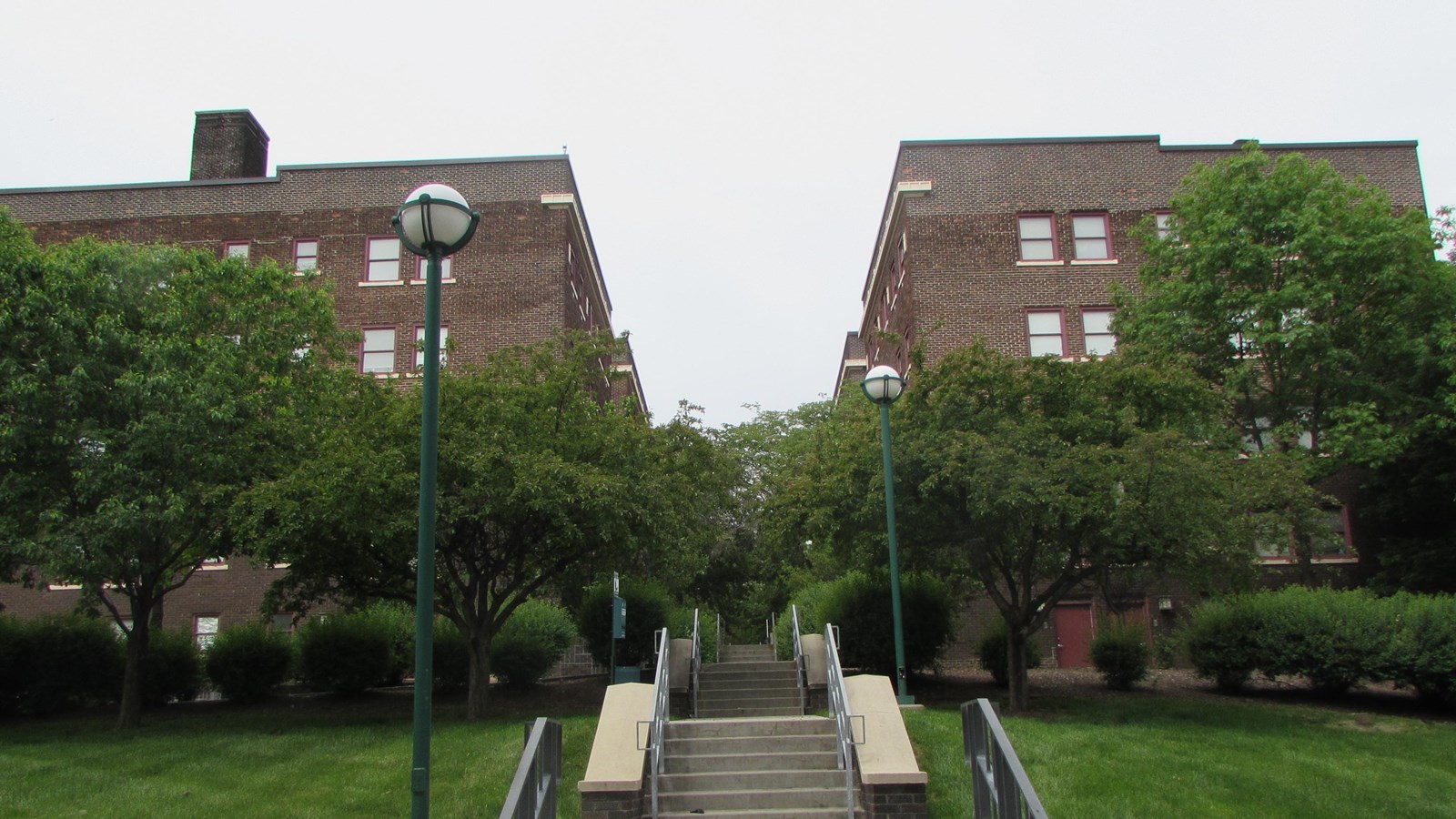Last updated: September 8, 2022
Place
Drake Court Historic District

David Calease, NPS
Quick Facts
Location:
221-223, 2230, 2236 Jones Street
Significance:
Architecture
Designation:
National Register of Historic Places
OPEN TO PUBLIC:
No
MANAGED BY:
Private Property Owner
Constructed between 1916 and 1921, the complex of twenty-two apartment buildings is the last consistent street architecture in Omaha. The apartment district’s plan is marked by regularity and symmetry, successfully fulfilling the developers’ desire to produce a cohesive and identifiable unit amongst the various buildings. The unified arrangement of these residential buildings around landscaped pedestrian areas represents the cosmetic Georgian Revival style of architecture popular at the time of construction. All but one building in the district – the Ansonia Apartments – were designed, financed, and constructed by the Drake Realty Construction Company.
Dreaming of being the biggest apartment house developer in the world, William B. Drake. Came to Omaha around 1915 with his brother George, building four apartment buildings. The Drakes used their early profits to form the Drake Realty Construction Company in 1916 and purchase the property between 20th and 22nd Streets about north of Leavenworth Street. Construction of the Drake Court’s first building started in 1916 with another fourteen buildings competed over the next three years, totaling 216 apartment units. Building continued along Jones Street between 22nd and 23rd Streets in late 1919, with the construction of the Dartmore Apartments. Now referred to as the Drake Court Annex, each of the five buildings contain thirty-six one-room and bath apartments. The Drake Court Historic District also includes the Ainsworth and Beverly Apartments – built by the Drakes – along with John A. Anderson’s and John L. Soderberg’s Ansonia Apartments.
The property was originally listed in the National Register of Historic Places in 1980, with additional documentation being submitted in 2014.
Dreaming of being the biggest apartment house developer in the world, William B. Drake. Came to Omaha around 1915 with his brother George, building four apartment buildings. The Drakes used their early profits to form the Drake Realty Construction Company in 1916 and purchase the property between 20th and 22nd Streets about north of Leavenworth Street. Construction of the Drake Court’s first building started in 1916 with another fourteen buildings competed over the next three years, totaling 216 apartment units. Building continued along Jones Street between 22nd and 23rd Streets in late 1919, with the construction of the Dartmore Apartments. Now referred to as the Drake Court Annex, each of the five buildings contain thirty-six one-room and bath apartments. The Drake Court Historic District also includes the Ainsworth and Beverly Apartments – built by the Drakes – along with John A. Anderson’s and John L. Soderberg’s Ansonia Apartments.
The property was originally listed in the National Register of Historic Places in 1980, with additional documentation being submitted in 2014.
